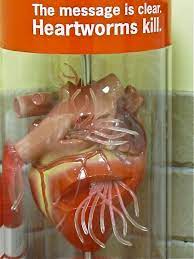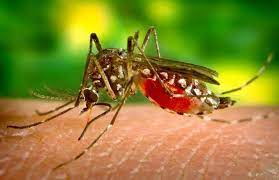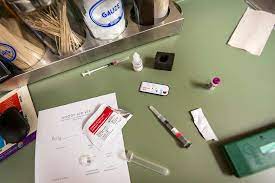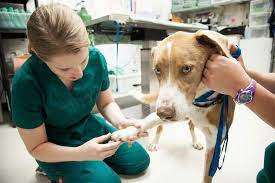Understanding Heartworm Disease in Dogs: Causes, Signs, and Prevention
Heartworm disease is a significant health concern that poses a serious threat to dogs across the globe. Caused by the parasitic worm Dirofilaria immitis, this condition can have devastating consequences for our beloved canine companions. Understanding what heartworm is, how dogs become infected, why it’s named as such, recognizing its signs, and learning how to prevent it are essential aspects of responsible pet ownership.


The name “heartworm” is a direct reflection of the parasite’s preferred location within the host’s body. These parasitic worms predominantly inhabit the heart, pulmonary arteries, and lungs of the infected animal. This positioning can lead to severe health issues, including obstruction of blood flow, damage to vital organs, and even heart failure.
While the term “heartworm” may sound alarming, its significance becomes clear when delving into how dogs contract this infection. Heartworms are transmitted through the bite of infected mosquitoes. When an infected mosquito bites a dog, it injects tiny larvae into the dog’s bloodstream. Over time, these larvae mature into adult worms, with a significant portion of their life cycle taking place within the cardiovascular system. As they grow, they can cause physical blockages and impair blood circulation, leading to a range of health complications.
In the following discussion, we will explore the signs that can indicate a potential heartworm infection in dogs. Recognizing these signs is crucial for early intervention and treatment, as advanced cases can be challenging to manage. Moreover, we will delve into preventative measures that pet owners can take to protect their furry companions from this insidious disease. By embracing knowledge and proactive measures, we can work together to safeguard our dogs’ health and well-being against the threat of heartworm disease.
Here is how dogs can get heartworm:

Mosquito Transmission: Mosquitoes play a pivotal role in the transmission of heartworm disease. These insects become unwitting carriers of heartworm larvae when they feed on infected animals. Once an infected mosquito lands on a dog and takes a blood meal, it injects the tiny but potent larvae directly into the dog’s bloodstream. This seemingly innocuous act propels the larvae into the next phase of their life cycle within the host’s body. Through this transfer, mosquitoes serve as the unfortunate agents responsible for introducing the heartworm larvae to their canine hosts. This intricate process underscores the importance of preventing mosquito bites to mitigate the risk of heartworm infection in our furry companions.
Larval Migration: After entering the dog’s body, the heartworm larvae embark on a journey of growth and migration that underscores the complexity of their life cycle. Maturation and migration are integral phases that mark their progression from innocuous larvae to potentially life-threatening adult worms. Once these larvae find their way into the dog’s bloodstream, they navigate the intricate pathways of the circulatory system. Their travels take them through a labyrinth of blood vessels, guided by a series of intricate interactions between the larvae and the host’s physiology. As these larvae advance through the bloodstream, they have a destination in mind – the heart and lungs. This relentless migration eventually brings them to the vital organs where they will undergo their final transformation into adult worms. The heart and lungs provide an ideal environment for the maturation process to unfold, allowing these parasites to grow and flourish, often at the expense of the host’s well-being. The journey from larvae to adults is a testament to the parasitic ingenuity that drives this complex life cycle. The migration of these larvae through the bloodstream and their eventual settlement in the heart and lungs serve as a sobering reminder of the potential damage they can inflict. Understanding this process highlights the urgency of early detection and intervention to prevent the maturation of heartworms and the subsequent health challenges they bring.

Heartworm infection in dogs brings with it a range of telltale signs that serve as windows into the challenges these loyal companions might be facing. These indicators, if carefully observed and understood, can play a crucial role in early detection and timely intervention, potentially mitigating the impact of this concerning condition. Among the common signs that hint at heartworm infection’s presence are several distinct markers. A persistent, nagging cough, often accompanied by labored breathing, can be an early signal of the heartworms’ infiltration into the lungs. This coughing can be a reflection of the irritation caused by the parasites as they disrupt the usual respiratory functions, and it underscores the intrusiveness of this infestation. Infected dogs might find themselves grappling with heightened fatigue and noticeable drops in energy levels. Activities that were once routine may now prove more taxing, speaking to the toll that the heartworms are quietly taking on their overall vitality. Unexplained weight loss or a sudden decrease in appetite can be a concerning red flag for heartworm infection. The mere presence of these parasites can put the body under stress, prompting alterations in eating habits and visible fluctuations in weight. As heartworms advance to their adult stages and cluster within the heart and lungs, the impediment to blood flow can lead to fluid buildup within the abdomen. The outcome is a visibly swollen abdominal region, hinting at the intricate impact of these parasites on the cardiovascular system. Heartworm infestations have the capacity to hinder a dog’s capacity to partake in physical activities. Breathing difficulties originating from the presence of the worms within the lungs can render exercise an uncomfortable and potentially distressing endeavor. As a result, dogs may exhibit reluctance to engage in their customary physical pursuits. Being attuned to these signs is paramount, underscoring the significance of regular veterinary check-ups and a proactive approach to healthcare. Equipped with awareness and a commitment to our canine companions’ well-being, we can play a pivotal role in ensuring they receive the necessary care to combat heartworm infection effectively and secure their continued health and happiness.

To avoid heartworm infection and its potential consequences, dog owners can take the following preventive measures:

Regular Veterinary Check-ups: Maintaining your dog’s health and safeguarding them against potential health risks, including heartworm infection, requires a proactive approach. One of the fundamental pillars of this approach is scheduling regular check-ups with your trusted veterinarian. These routine appointments provide invaluable opportunities to monitor your dog’s overall well-being and engage in meaningful discussions about heartworm prevention. During these check-ups, your veterinarian can assess your dog’s health status, review their medical history, and conduct any necessary tests to detect early signs of potential issues. Importantly, these appointments serve as platforms for you to have informed conversations about heartworm prevention strategies tailored to your dog’s specific needs. Your veterinarian is a valuable source of guidance, equipped with the knowledge to recommend the most suitable heartworm prevention methods for your dog’s age, breed, lifestyle, and health condition. By collaborating with your veterinarian and staying up-to-date with their professional insights, you can make well-informed decisions about the most effective preventive measures to implement.
In the larger context of your dog’s health and longevity, these regular check-ups assume a role of paramount importance. They empower you with the information and tools necessary to protect your furry companion from the risks posed by heartworms and other potential health challenges. By prioritizing these check-ups, you are demonstrating a commitment to your dog’s well-being and ensuring that their health remains at the forefront of your care regimen.
Prescription Medications: One of the cornerstone strategies in protecting your canine companion from the threat of heartworm infection is the diligent administration of monthly heartworm preventive medications, following the guidance provided by your trusted veterinarian. These medications stand as a potent line of defense, leveraging their effectiveness to halt the progression of heartworm larvae into adult worms within your dog’s body. By adhering to your veterinarian’s prescribed regimen, you are taking proactive steps to disrupt the heartworm life cycle at its early stages. These preventive medications act as a formidable barrier, inhibiting the larvae’s maturation process and sparing your dog from the potential health complications that adult heartworms can bring. With the right medications and a consistent routine, you are enhancing your dog’s defenses against heartworm infection and ensuring their continued well-being.
It is essential to recognize that while the visible signs of heartworm infection can be distressing, prevention plays a crucial role in keeping your dog safe from this insidious threat. By embracing the use of prescription heartworm preventive medications as a part of your dog’s healthcare routine, you are making a proactive investment in their health and happiness. Always consult your veterinarian for personalized advice and guidance on the best preventive measures tailored to your dog’s needs
Avoid Mosquitoes: Mitigating the risk of heartworm infection in your cherished canine companion entails a multifaceted approach, one that includes thoughtful strategies to minimize their exposure to mosquitoes. By adopting practical measures to keep mosquitoes at bay, you are taking a proactive step towards safeguarding your dog’s health and well-being.
One of the primary lines of defense involves being mindful of when mosquitoes are most active. These insects tend to emerge during the twilight hours of dawn and dusk, as well as during the warmer months. By keeping your dog indoors during these peak mosquito activity times, you are significantly reducing their chances of encountering these carriers of heartworm larvae. Exploring the realm of pet-friendly mosquito repellents can further fortify your efforts in warding off these insects. Consult your veterinarian to identify repellents that are safe and effective for your dog’s specific needs. These repellents formulated to deter mosquitoes from approaching your dog, minimizing the risk of bites and potential infection.
In your immediate environment, take steps to reduce mosquito breeding grounds. Eliminate stagnant water sources where mosquitoes lay their eggs, such as water bowls left outside for extended periods. By doing so, you are curbing the mosquito population around your home and creating a less inviting environment for these pests.
Year-round Protection: To safeguard your cherished canine companion from the unrelenting threat of heartworm infection, commit to a proactive stance that spans across seasons. While the notion of focusing solely on prevention during warmer months might be tempting, it is vital to recognize that heartworms pose a year-round risk in many regions. Embracing a year-round approach to heartworm prevention ensures that your dog’s health and well-being remain consistently safeguarded throughout every month of the year. Heartworm-carrying mosquitoes do not restrict themselves to specific seasons; they can persist even during cooler months, particularly in regions with milder climates. This signifies that the potential for heartworm transmission persists, irrespective of whether the warmth of summer yields to the crispness of fall or the chill of winter takes hold. By maintaining your dog’s preventive regimen throughout the entire year, you establish an unbroken shield against heartworm infection. Opting for year-round protection for your dog underscores your unwavering dedication to their health and quality of life. This choice acknowledges the reality that heartworm infection is not limited to particular times of the year, highlighting your commitment to their ongoing safety. By integrating heartworm preventive measures into your routine consistently, you proactively reinforce your role as a vigilant and responsible guardian of your four-legged companion. Remember to consult your veterinarian to tailor the most suitable prevention plan for your dog’s unique circumstances.
In Summary:
By prioritizing heartworm prevention methods such as administering prescribed medications, scheduling routine veterinary check-ups, and adopting strategies to avoid mosquitoes, dog owners are demonstrating their unwavering commitment to their pets’ health. These actions create a robust shield against heartworm infection, offering a safeguard that goes beyond the immediate moment and contributes to the long-term health and vitality of their four-legged companions.
As responsible guardians, we hold the responsibility to provide our dogs with the best possible protection against preventable diseases like heartworm. Through education, awareness, and proactive measures, we are equipping ourselves with the tools to minimize the risk and keep our furry friends safe. By embracing the power of prevention and embracing regular veterinary care, we are not only protecting our dogs from heartworm infection but also enriching their lives with the joy, companionship, and love they bring to our homes.






